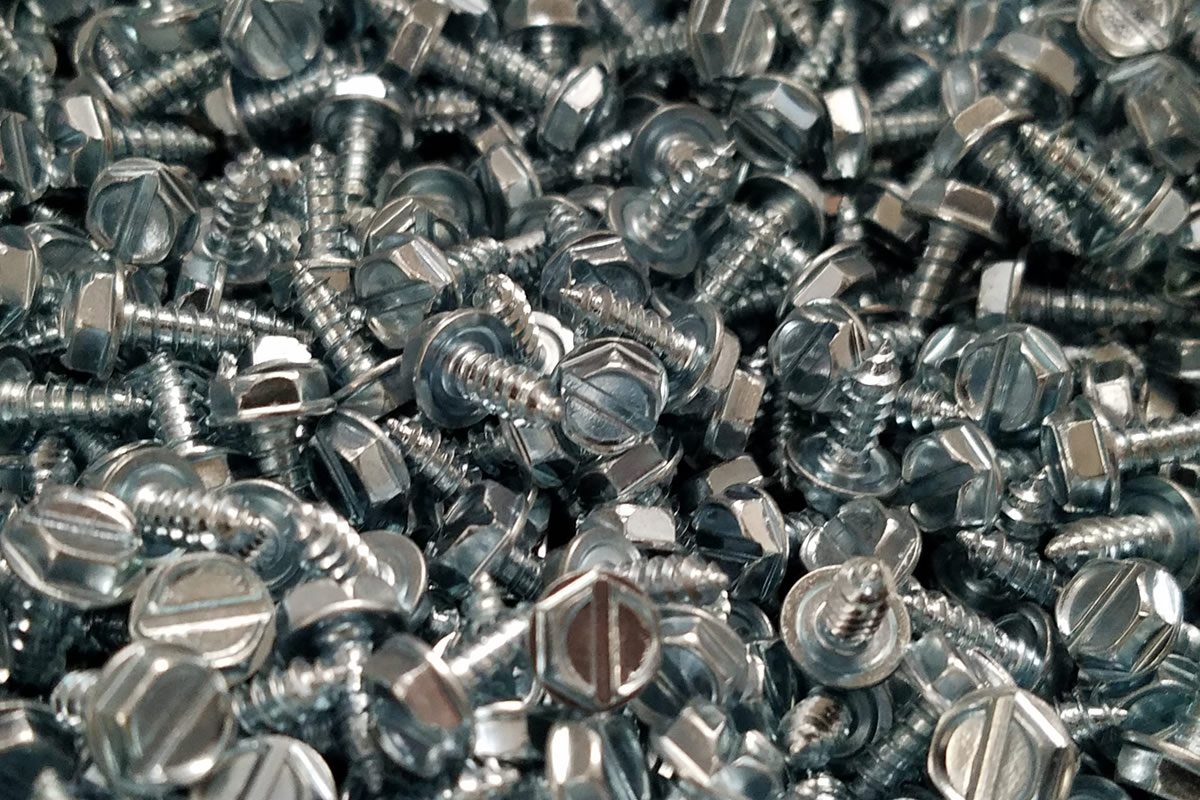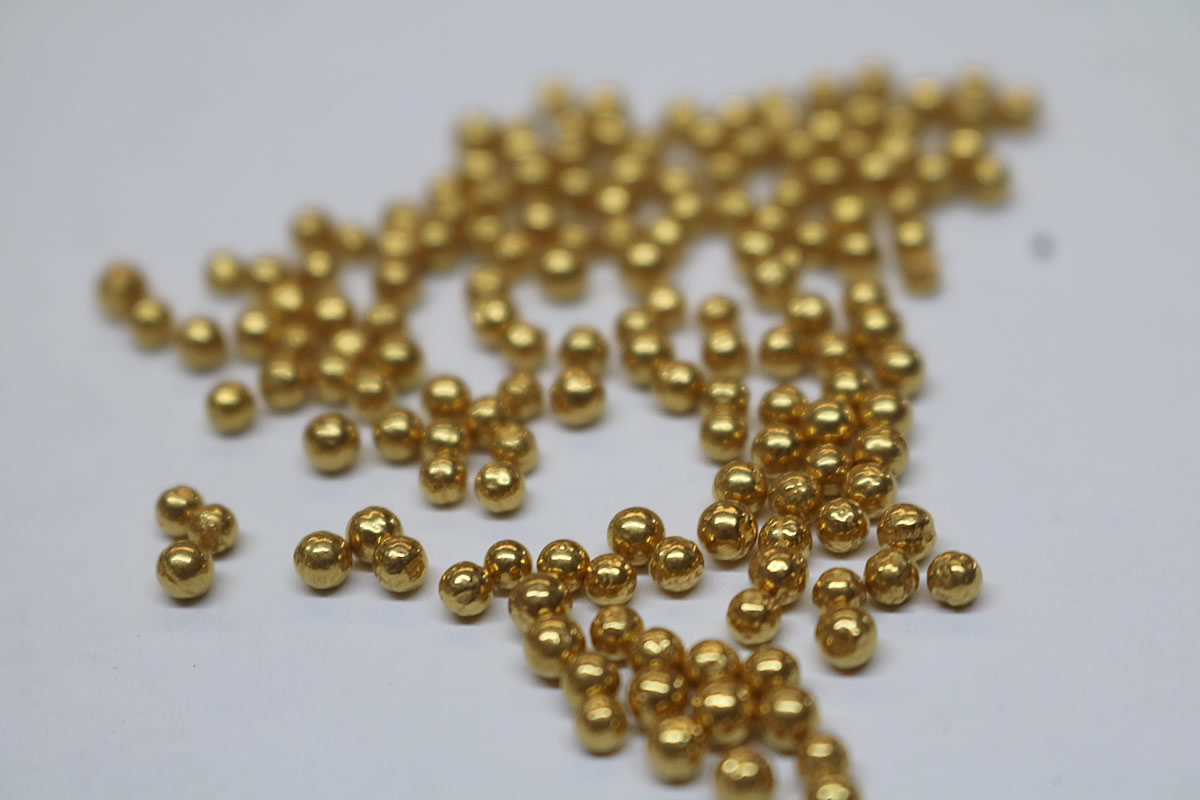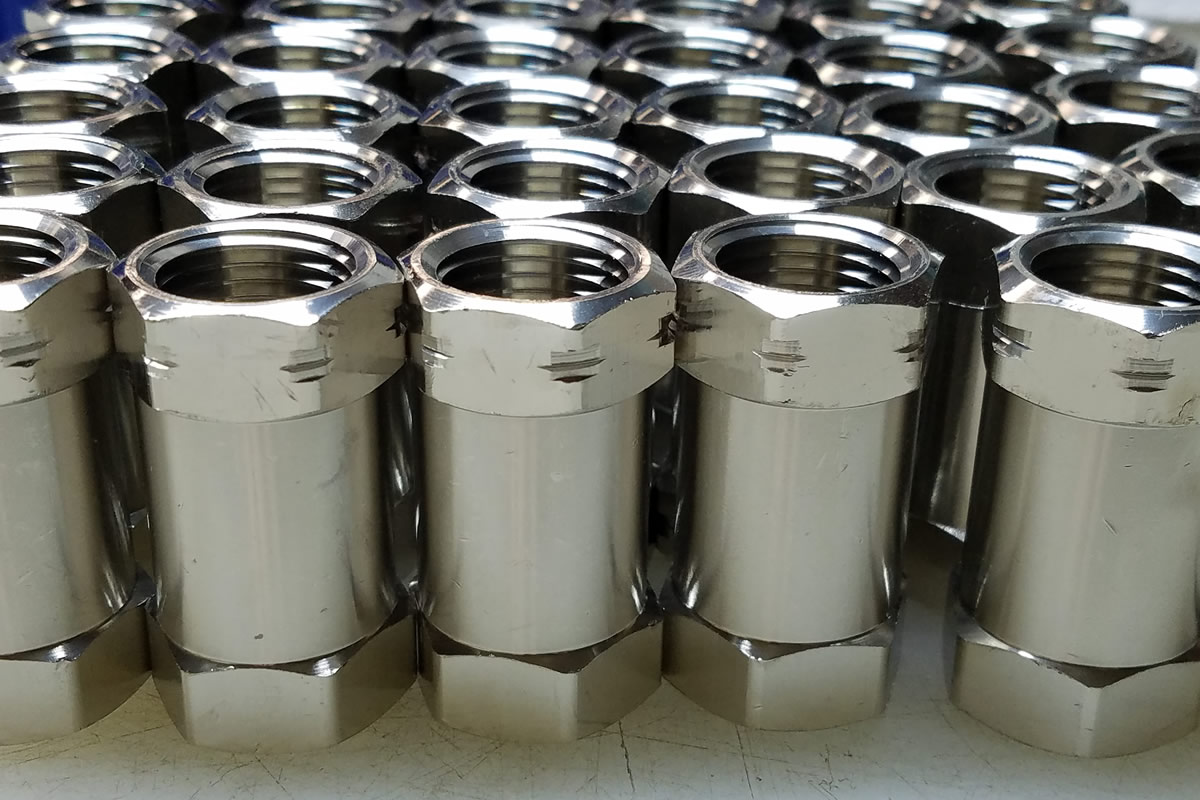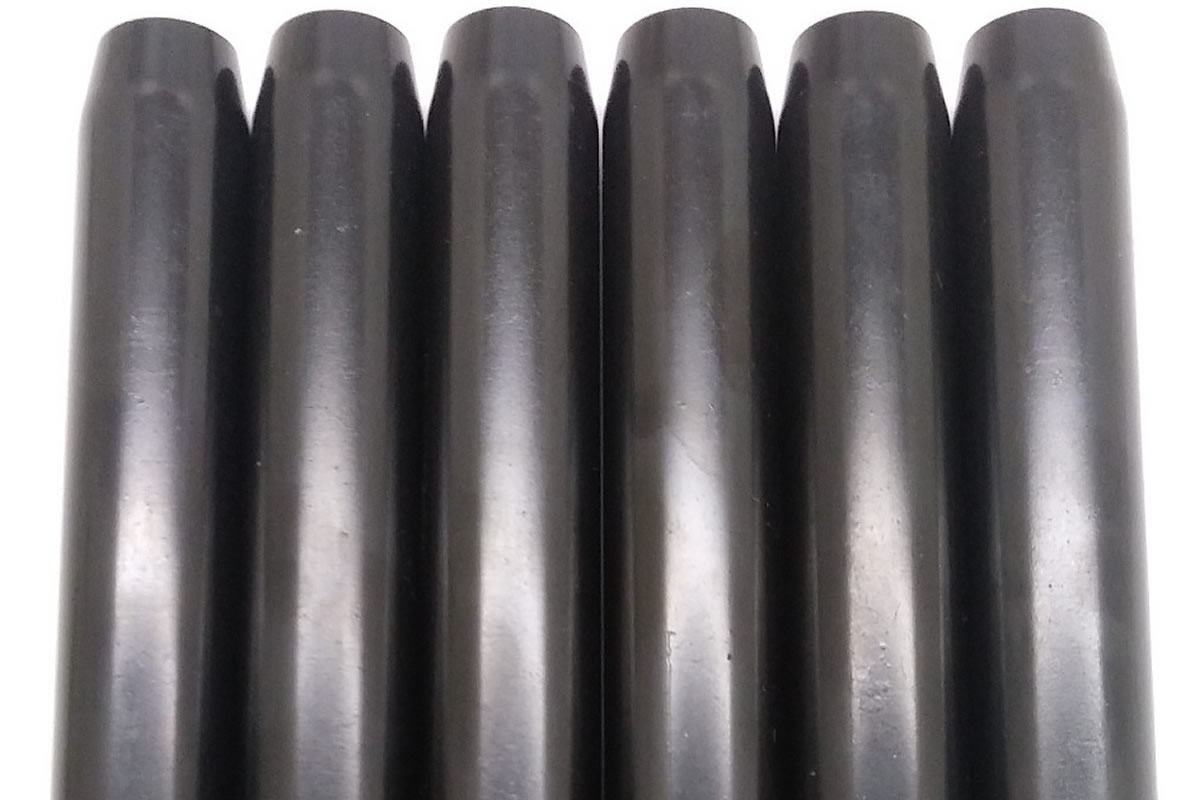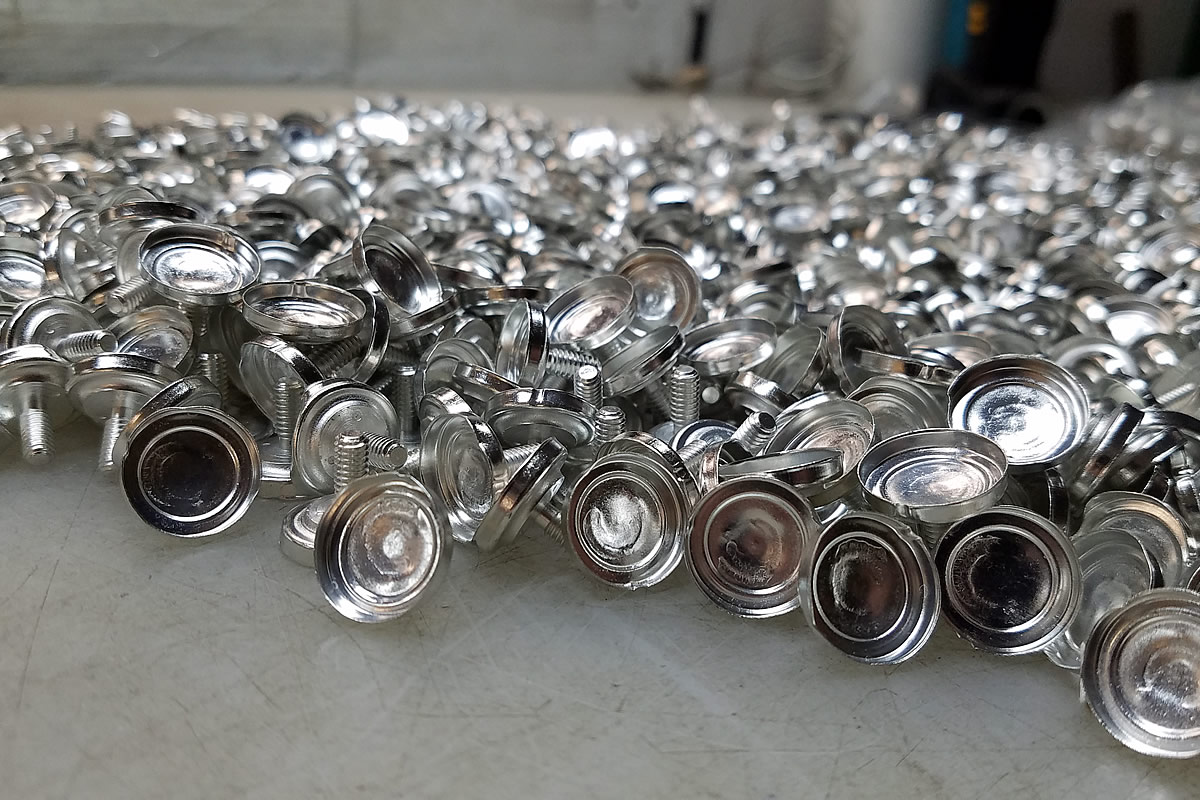Differences of Electroless Nickel by percentage of phosphorus content
By varying the percentage of phosphorus or boron in the coating, deposits can be produced to exhibit non-magnetic and highly corrosion resistant characteristics or hard deposits with excellent wear resistance.
Ideal for electronic parts, functional and engineering applications.
Low Phosphorus
Medium Phosphorus
High Phosphorus
Electroless Nickel Melting Point
Low phosphorus = wider melt point
Medium phosphorus = narrow melt point
Deposit Uniformity: Uniform coating thickness from inside through the outside
Electroless Nickel vs Electrolytic Nickel
Electroless Nickel
Electrolytic Nickel
Applications for Electroless Nickel
Electroless nickel is normally applied for five different applications: coatings used for corrosion resistance, wear resistance, lubricity, solderability, or buildup of worn or over-machined surfaces. To varying degrees, these properties are utilized by all segments of industry, either separately or in combination.

Petroleum and Chemical Industries
The petroleum and chemical process industries are the largest users of electroless nickel for corrosion protection. High phosphorus coatings are commonly used to resist corrosion and erosion in aggressive brines, acids, and gasses. Common applications include valves, chokes, blowout preventers, mud pumps, sucker rod and submergible pumps, pipe, heat exchangers and separators, packers, safety valves, production tubing, and all types of downhole tools.
Medical, Dental and Pharmaceutical
Electroless nickel is also used for medical, dental and pharmaceutical equipment because of its superior corrosion and wear resistance. This equipment is often subject to severe abuse, but must remain completely reliable. Electroless nickel provides almost complete resistance to these environments and frequently allows steel or aluminum to be used instead of more expensive stainless steel.
Typical medical applications are scissors, suture needles, clamps, forceps and hubs for disposable hypodermic needles. In the pharmaceutical industry, extruders, sizing screens, pill sorters and filing equipment are common applications.


Printing and Textile Industries
The use of electroless nickel for the cylinders and rolls used in the printing and textile industries has grown greatly during the past several years. The ability of the coating to deposit uniformly allows the cylinder to be machined to size, balanced, and plated without subsequent finishing or grinding. The life of the equipment is also greatly extended by the lubricity and wear resistance of electroless nickel. Other common textile applications include thread guides, fiber feeds, fabric knives, heddles, bobbins, shuttles, rapiers, ratchets, knitting needles and picks.
Aerospace
In the aerospace industry, electroless nickel is used to protect the surface of light metals, such as aluminum, from corrosion and wear. It also enhances the appearance of these metals with a polished, stainless steel look. The coating is used on a variety of aircraft parts, including engine components, structural air frame and landing gear pieces, refueling systems, compressor blades, and servo valves. Its uniform thickness, and its ability to coat the inside of holes and recesses, makes electroless nickel an ideal coating for welded tanks and complex hydraulic valve and manifold systems.
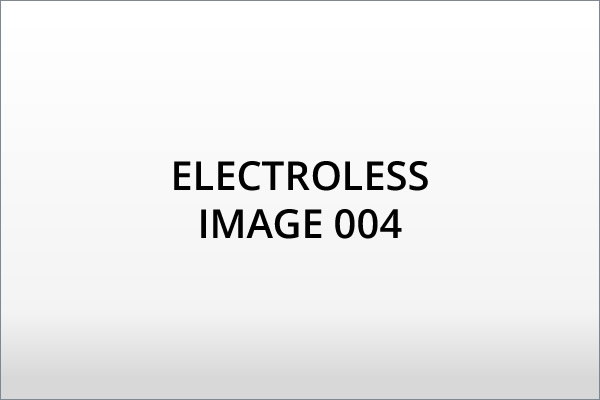

Packaging and Handling
With packaging machinery and food handling equipment, electroless nickel is also used because of its excellent wear and corrosion resistance. The coatings provide an attractive finish and help to ensure the cleanliness of the part. Electroless nickel is used to handle such diverse products as sodium hydroxide, food grade acids and fish oils. Its uniform deposit is especially useful for hydraulic cylinders, worm feeds and extruders, shafts, chain belts and other close fitting parts. Common food handling applications include pneumatic canning machinery, hamburger molds and grills, bun warmers, baking pans, fryers and chocolate molds.
Wood, Pulp and Paper
Wood handling, pulp and paper equipment operate under conditions of severe corrosion and abrasion. The salt and organic acids present in woods can cause high rates of attack on common materials. Electroless nickel coatings provide good protection against these conditions and are presently being used for knife holder cover plates and for abrading plates for wood cutting and chopping machines. Differential pins are also a large application area.


Automotive
Except for plated plastics, components for the automotive industry historically have provided only a limited market for electroless nickel. With the longer lives and greater reliability now required for automotive components, however, more and more applications for the coating are being developed. Some existing applications are pad holders for disc brakes and brake cylinders, synchromesh gears, piston rods, shock absorbers, steering assemblies, mufflers, exhaust pipes, exhaust manifolds and lock components. Differential pins are also a large application area.
Molds and Dies
The ability of electroless nickel and electroless nickel/PTFE coatings to provide a uniform deposit, even into deep recesses, helps to ensure that the finish on a mold will duplicate the original surface. The natural lubricity of the coating provides smooth flow during injection and quick and easy release of the part. Because of its high hardness at elevated temperatures, electroless nickel minimizes erosion and abrasion of molds and dies and helps to extend their lives. The coating also provides excellent protection against the corrosive fumes produced during molding such plastics as ABS, PVC, polycarbonate, acrylics and materials with thermoplastic additives. Similarly, electroless nickel has been found to provide a superior coating for zinc diecast dies and glass molds.


Electronics
Coaxial connectors, headers, housings and cases, heat sinks, diode cans, shutters, interlocks and memory disks and drums are among the many electronic applications presently plated with electroless nickel. For electronic components the coating is used for its combination of superior corrosion resistance and solderability. Other important considerations with these components are the coating’s uniform thickness and its consistent electrical, thermal and physical properties.
Salvage and Repair
Electroless nickel coatings are very cost effective for salvage and repair. Because of its superior adhesion, uniform and accurately controlled thickness, and excellent wear and corrosion resistance, these coatings are often used to selectively build up worn or mis-machined parts. The cost savings from such repairs are often substantial, since they not only allow mis-machined parts to be used and thus avoid their remanufacture, but this also allows the manufacturing facility to increase the production of new parts and improves productivity.


Mining
Equipment for mining operations is a growing application for electroless nickel coatings. Mining environments are both very corrosive and abrasive. Mine waters are typically acidic and can cause high rate of attack of unprotected steel. In addition, the dust produced during mining can result in severe erosion. Electroless nickel coatings have been found to withstand these conditions with little attack. Common applications are hydraulic components, framing, cylinder heads for jetting pumps, pipeline connections and tubing, and mine engine components.
Contact Us
We want to hear from you.
Contact Plating Solutions today
and send us your questions and comments!


